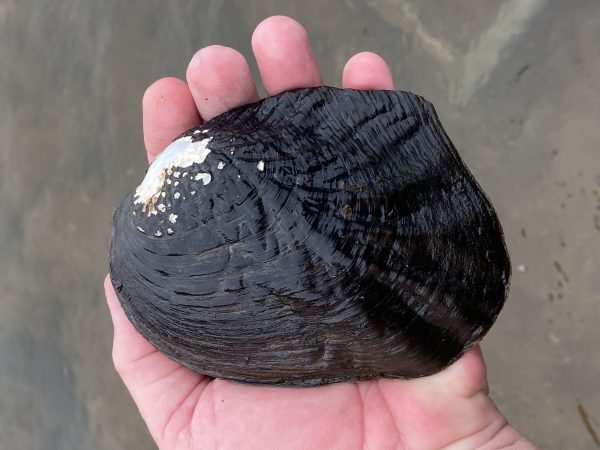Flexing Her Mussels

UNC Charlotte College of Computing and Informatics (CCI) Bioinformatics and Genomics professor Dr. Rebekah Rogers has been fascinated by freshwater mussels since childhood. Raised in Florence-Muscle Shoals, Alabama, which sits along the Tennessee River and is home to one of North America’s most diverse populations of mussels, Rogers even did her high school science project on the now-endangered bivalves.
“Whether you care about freshwater bivalves or not, they influence your life,” says Rogers. “Bivalves are filter feeders that improve water quality. If bivalve populations drop, rivers are overrun by algae, toxins accumulate and animals in the aquatic ecosystem go hungry.”
The key to Rogers’ work is understanding how genetic responses in threatened mussel populations can help us better preserve a cornerstone species in aquatic communities.
In the March 2021 edition of Molecular Ecology, a paper from Rogers and her team asserts that more than 70% of freshwater bivalves in North America are threatened, endangered or extinct because of pollution, damming of waterways and overfishing.
Though humanity needs to intervene to preserve the species, the mussels are not going down without a fight. For theoir part, the resilient bivalves have adapted by creating extra copies of detox genes.
“They come up with answers to natural selection by turning on a Xerox machine to get extra gene copies,” Rogers says. “Cytochrome P450 genes, ABC transporters, thioredoxins and glutathione transferase genes all got copied like crazy. These all help the mussels live in polluted waters. Similar genes change when insects adapt to pesticide use. That means these very different animals are coming up with similar genetic solutions for the problems humans inflict on them.”
It is a theme worth exploring and may be applicable to the survival of other species threatened by man-made challenges.
“In the genomes of these bivalves, we discovered extra copies of detox genes in a species that lives in a river that has been sprayed with DDT since the 1960s,” Rogers says. “Broadly speaking, this work can tell us more about how genomes change and adapt to pesticides and other toxins. In other species affected by pesticides, we may expect gene duplications will be important to their survival.”
Using genetic data in population management and to monitor endangered species is relatively new. In the past, populations were counted and environmental assumptions were applied to generate conclusions about a species’ health and history.
“With whole genome information for Unionidae, we can start to explore how they evolved to environmental challenges in the past, Rogers says. “We can use these genetic tools in the present to get a better picture of how populations are changing now and do a better job of tracking animals.”
While the work continues, for Rogers, this represents the realization of a lifelong dream.
“I always wanted to do genetics,” she says. “When I was working on mussels in high school, I used to wish we could do more to study their DNA. I’m glad we’ve been able to work with this group of animals to generate genetic resources. We’re thrilled to have been able to move them into the bioinformatic era with Big Data.”
Paper Title: Gene family amplification facilitates adaptation in freshwater unionid bivalve Megalonaias Nervosa
Co-authors on the project: Stephanie Grizzard, James Titus-McQuillan, Katherine Bockrath, Sagar Patel, John Wares, Jeffery Garner, Cathy Moore
To read the original article in Molecular Ecology, CLICK.